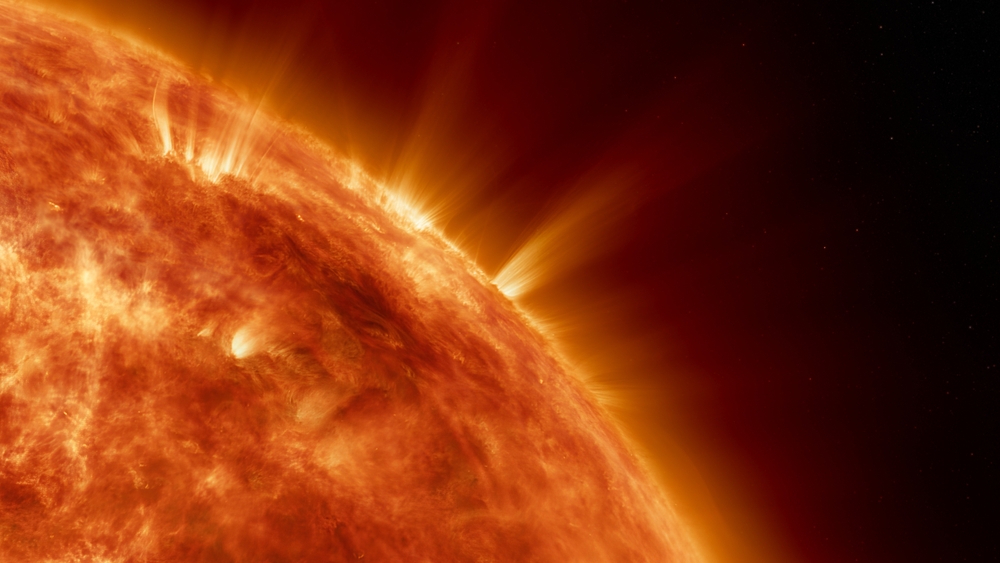Unexpected behaviour at phase transitions between classical and quantum magnetism has been observed in different quantum simulators operated by two independent groups. One investigation was led by researchers at Harvard University and used Rydberg atom as quantum bits (qubits). The other study was led by scientists at Google Research and involved superconducting qubits. Both projects revealed unexpected deviations from the canonical mechanisms of magnetic freezing, with unexpected oscillations near the phase transition.
A classical magnetic material can be understood as a fluid mixture of magnetic domains that are oriented in opposite directions, with the domain walls in constant motion. As a strengthening magnetic field is applied to the system, the energy associated with a domain wall increases, so the magnetic domains themselves become larger and less mobile. At some point, when the magnetism becomes sufficiently strong, a quantum phase transition occurs, causing the magnetism of the material to become fixed and crystalline: “A good analogy is like water freezing,” says Mikhail Lukin of Harvard University.
The traditional quantitative model for these transitions is the Kibble–Zurek mechanism, which was first formulated to describe cosmological phase transitions in the early universe. It predicts that the dynamics of a system begin to “freeze” when the system gets so close to the transition point that the domains crystallize more quickly than they can come to equilibrium.
“There are some very good theories of various types of quantum phase transitions that have been developed,” says Lukin, “but typically these theories make some approximations. In many cases they’re fantastic approximations that allow you to get very good results, but they make some assumptions which may or may not be correct.”
Highly reconfigurable platform
In their work, Lukin and colleagues utilized a highly reconfigurable platform using Rydberg atom qubits. The system was pioneered by Lukin and others in 2016 to study a specific type of magnetic quantum phase transition in detail. They used a laser to simulate the effect of a magnetic field on the Rydberg atoms, and adjusted the laser frequency to tune the field strength.
The researchers found that, rather than simply becoming progressively larger and less mobile as the field strength increased (a phenomenon called coarsening), the domain sizes underwent unexpected oscillations around the phase transition.
“We were really quite puzzled,” says Lukin. “Eventually we figured out that this oscillation is a sign of a special type of excitation mode similar to the Higgs mode in high-energy physics. This is something we did not anticipate…That’s an example where doing quantum simulations on quantum devices really can lead to new discoveries.”
Meanwhile, the Google-led study used a new approach to quantum simulation with superconducting qubits. Such qubits have proved extremely successful and scalable because they use solid-state technology – and they are used in most of the world’s leading commercial quantum computers such as IBM’s Osprey and Google’s own Willow chips. Much of the previous work using such chips, however, has focused on sequential “digital” quantum logic in which one set of gates is activated only after the previous set has concluded. The long times needed for such calculations allows the effects of noise to accumulate, resulting in computational errors.
Hybrid approach
In the new work, the Google team developed a hybrid analogue–digital approach in which a digital universal quantum gate set was used to prepare well-defined input qubit states. They then switched the processor to analogue mode, using capacitive couplers to tune the interactions between the qubits. In this mode, all the qubits were allowed to operate on each other simultaneously, without the quantum logic being shoehorned into a linear set of gate operations. Finally, the researchers characterized the output by switching back to digital mode.
The researchers used a 69-qubit superconducting system to simulate a similar, but non-identical, magnetic quantum phase transition to that studied by Lukin’s group. They were also puzzled by similar unexpected behaviour in their system. The groups’ subsequently became aware of each other’s work, as Google Research’s Trond Anderson explains: “It’s very exciting to see consistent observations from the Lukin group. This not only provides supporting evidence, but also demonstrates that the phenomenon appears in several contexts, making it extra important to understand”.
Both groups are now seeking to push their research deeper into the exploration of complex many-body quantum physics. The Google group estimates that, to conduct its simulations of the highly entangled quantum states involved with the same level of experimental fidelity would take the US Department of Energy’s Frontier supercomputer – one of the world’s most powerful – more than a million years. The researchers now want to look at problems that are completely intractable classically, such as magnetic frustration. “The analogue–digital approach really combines the best of both worlds, and we’re very excited about this as a new promising direction towards making discoveries in systems that are too complex for classical computers,” says Anderson.
The Harvard researchers are also looking to push their system to study more and more complex quantum systems. “There are many interesting processes where dynamics – especially across a quantum phase transition – remains poorly understood,” says Lukin. “And it ranges from the science of complex quantum materials to systems in high-energy physics such as lattice gauge theories, which are notorious for being hard to simulate classically to the point where people literally give up…We want to apply these kinds of simulators to real open quantum problems and really use them to study the dynamics of these systems.”
The research is described in side-by-side papers in Nature. The Google paper is here and the Harvard paper here.
The post Quantum simulators deliver surprising insights into magnetic phase transitions appeared first on Physics World.




























